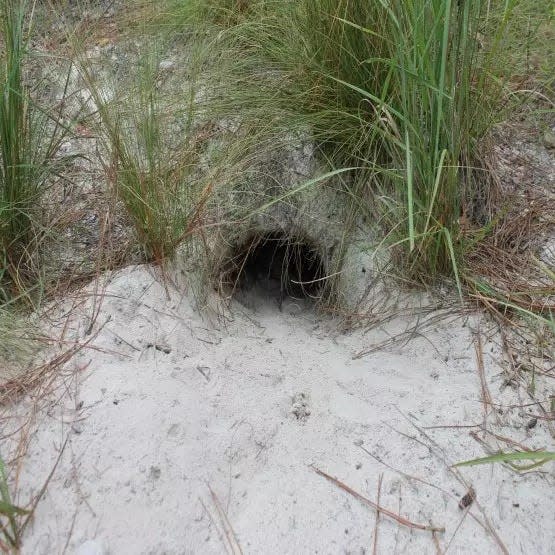Move over Punxsutawney Phil. These Florida burrowing animals can take stab at forecasting
Groundhog Day and all the hoopla surrounding it doesn't mean much to Florida.
After all, you have to actually have a "winter" to care whether you get six more weeks of it.
But it did get us to wondering about how Florida could celebrate the day. So sit back, sip that cup of coffee — especially all of you who regularly search Google for when Starbucks opens — and let's see what could emerge from that hole in the ground in your yard and what it means.
Let's take first things first, just in case you live in, well, a hole in the ground.
When is Groundhog Day?
Groundhog Day is "celebrated" on Feb. 2.
Who is Punxsutawney Phil and what is Groundhog Day?
Punxsutawney Phil is a groundhog who lives near Punxsutawney, Pennsylvania. Or so we've heard. He must have really good genes — or lots of cousins — since he's been around since 1886.
Phil is the central figure in Punxsutawney's annual Groundhog Day celebration. The furry forecaster is said to come out of his hole after a long winter's nap — oops, almost shifted into a Christmas poem there — to look for his shadow.
If he sees it, it's an omen of six more weeks of bad weather, or more winter ahead.
If the day is cloudy and there is no shadow, he takes it as a sign of spring and stays above ground.
We're not going to get into how often Phil's predictions are accurate. How would you like to be judged on your accuracy of a decision made seconds after you woke from a months-long nap — and with thousands of people watching?
Where is Punxsutawney, the town, not the groundhog?
Originally a Native American campsite, according to Visit Pennsylvania, Punxsutawney was incorporated as a borough in 1850.
It's located in western Pennsylvania about 90 miles northeast of Pittsburgh and 100 miles south of Erie.
It's home to about 6,200 residents and one famous groundhog, according to the Punxsutawney Chamber of Commerce.
Who makes those holes in Florida yards?
Small, shallow holes are often evidence of squirrels and armadillos, but some of the holes we see in our Florida yards are the entrances to underground homes, according to the University of Florida Institute of Food and Agricultural Services.
Anything less than 3 inches across is likely to be the work of insects, moles, rodents, or snakes.
Larger holes that are 6 to 12 inches in diameter and are found near the base of trees, logs, or walls are likely to have been made by a red fox, skunk, armadillo, or coyote.
Florida versions of Punxsutawney Phil

Gopher tortoise: Move over Phil for this Florida "gopher." This slow-moving tortoise should make shadow-detecting easy. Either way, he probably doesn't care much since he spends 80% of his time in his burrow.
Yellow jackets: We'll never know whether yellow jackets see their shadows. We're too busy running away when they come out of their underground homes.
Blue land crabs: Shadow or no shadow, it's time for lunch somewhere and these tasty crabs certainly fit the bill. Watch out for that claw, though. It can deliver quite a pinch to deter your appetite.
Armadillos: No shadow for these tiny-tank mammals. They're active at night.
Skunks: See yellow jackets. And make sure you're at least 15 feet away or you really won't care whether there's a shadow.
Foxes: Now we have a real contender. Active at dawn and dusk, these sharp-eyed predators could give Phil a run for the prognosticator title. Now if we could just come up with a name to match. Honest John is already taken. Foxy Florida? Jacques the Fox?
Burrowing owl: This Florida native could probably spot its shadow in a millisecond with those eyes. What's it mean? Summer is probably here or fast approaching. In Florida, that's probably a wise forecast.
Iguanas: These "Jurassic Park" wannabes are probably too busy digging their burrows in February — it's egg-laying time don't ya know — to care about their shadows, but if they're not falling from a tree, it's probably warm out there and spring is on its way.
This article originally appeared on Treasure Coast Newspapers: Groundhog Day 2024: What Florida animals could predict spring?
